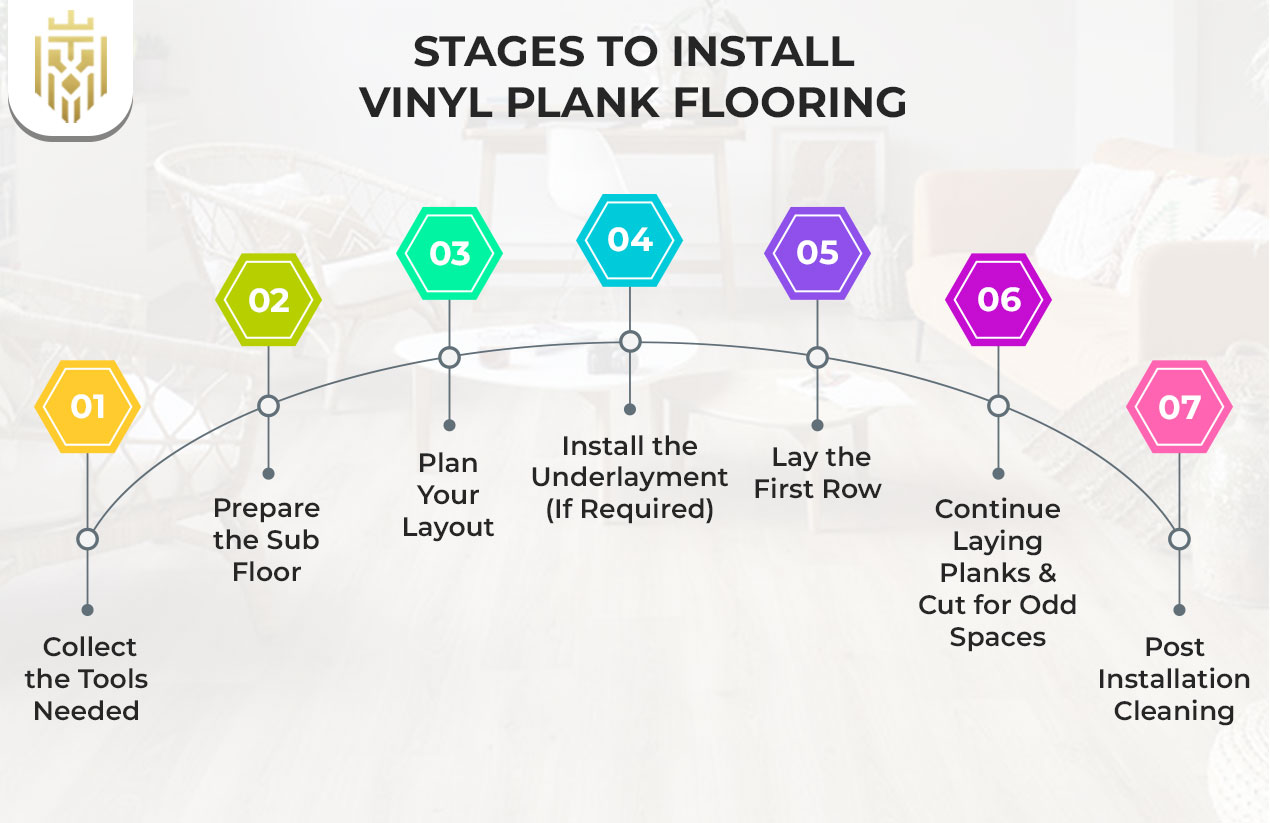How To Install Vinyl Plank Flooring?
Vinyl plank flooring can be installed quickly and easily if each step is worked on neatly. To begin installing vinyl plank flooring, make sure you prepare, plan how the planks should lie and select the proper tools. By being precise and methodical, a good floor install can turn your room into a perfect and professional-look space.

-
Collect the Tools Needed
You should have measuring tools, a utility knife, a tapping block, a rubber mallet, spacers and cleaning supplies when you install vinyl plank flooring. Preparation and the correct tools will allow you to install vinyl plank precisely, so your entire process runs smoothly.
-
Prepare the Sub Floor
Make sure to carefully check the subfloor before putting up vinyl. Your work area needs to be clean, level, dry and free from cracks or debris. Plug in any missing parts with the right type of filler. If you adequately prepare the subfloor, your vinyl planks won’t be uneven and will stay in place for longer.
-
Plan Your Layout
Ensure the longest planks sit along either the main source of light or the main wall in your vinyl plank floor design. To make both your seams strong and pretty, space the seams 6 to 8 inches apart. By planning, you can be sure that your flooring template is correct and doesn’t have any awkwardly narrow last rows.
-
Install the Underlayment (If Required)
There are some subfloors that underlayment makes more comfortable and protects against moisture. Lay the vinyl plank vapor-first and make sure it’s positioned as you planned for your floor. Cover the stitching on your mask with tape. With this step, the surface is ready for vinyl installation that will last and install more smoothly.
-
Lay the First Row
The first row should be placed next to a straight wall with a 1/4-inch opening for movement. When you cut, put the rough part of the wood against the wall. Right spacing and line-up of planks will ensure the job looks professional when starting the vinyl plank installation.
-
Continue Laying Planks & Cut for Odd Spaces
As you go along, install another piece of vinyl by angling it and attaching it to the ones already installed. Cut any unusual shapes with either a utility knife or jigsaw to ensure the fit is clean and the expansion gaps aren’t damaged. At this part of the process, you can see how vinyl plank works well in unusual or narrow spots.
-
Post-Installation Cleaning
Wait at least two days after putting in vinyl flooring, since the adhesive needs time to set. Brush the trash off with a broom or use a vacuum to remove debris. After that, sweep around the floors with a pH-neutral product. Minimize how much moisture your vinyl plank flooring comes into contact with and stay away from strong chemicals for its best results.
Where can you install Vinyl Plank flooring?
Vinyl plank flooring can be used in bathrooms, kitchens, bedrooms, basements and even on some feature walls. Because it’s water-resistant and stain-proof, it does well in high-traffic and wet places. Because vinyl flooring is lightweight and cut easily, most beginner DIY enthusiasts can install it.
FAQs
1) How to install Vinyl Plank flooring?
First, prepare your subfloor, decide where to install the flooring, install underlayment (if you like), put the planks down by clicking them or adding glue and leave expansion spaces between them. Clean up and do the finishing touches for a nice final effect.
2) Can vinyl plank flooring be installed over existing tile or hardwood?
If the surface where regular vinyl plank goes is clean and strong and if the tiles or hardwood are level, you may install vinyl flooring over them. Minor unevenness can be fixed with the use of an underlayment or leveling compound just before installing the floor.
3) When is underlayment required for vinyl plank flooring?
Putting down underlayment is important if your subfloor is not level, makes a lot of noise or is likely to allow moisture. It protects the floor, reduces noise and increases how long the floor lasts. Many vinyl planks have attached underlayment included which means you won’t need additional layers for certain types of lay-down.
4) How long does it take to install vinyl plank flooring?
On average, a typical installation for an average-sized room lasts about 1–2 days, depending on the floor’s substructure, the size of the space and the person’s expertise. Setting up the project yourself can be a slow process, mainly when there are complicated cuts or other prep work needed.









